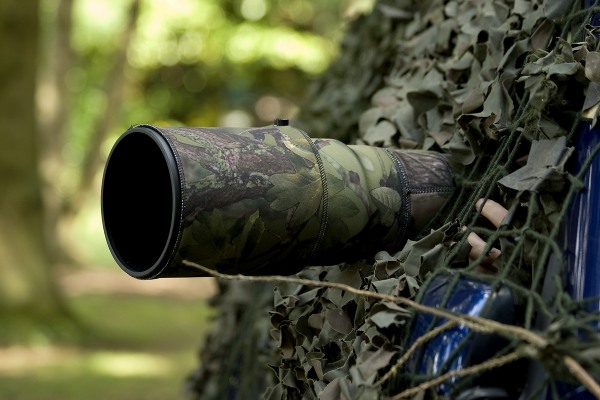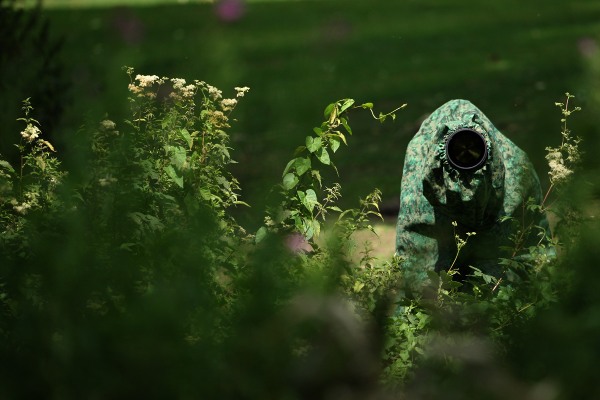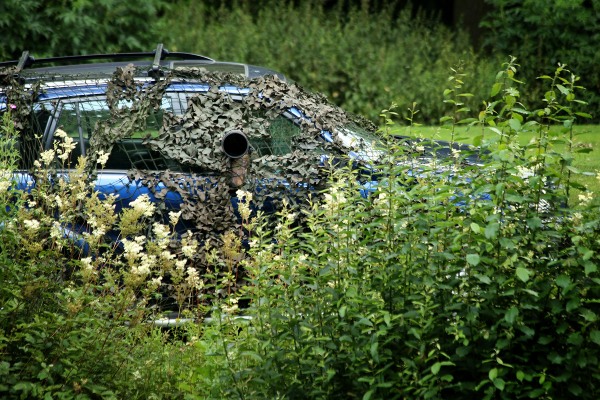The Art Of Stealth When Photographing Wildlife
As a photographer who has tracked and photographed wildlife not only in the U.K but in mainland Europe as well, it still amazes me how many photographers and wildlife watchers that I meet whilst out in the wilds still cannot understand the necessity for the stealth approach.
I always meet wildlife watchers on tracks or in woodlands and I often get asked what have I seen? What have I managed to photograph? And more often than not I hear the reply “Oh, how have you managed that?” or “we have been out here for days and still not seen it“. Thing is, they are never going to because they are dressed in a very nice bright yellow t-shirt or blue and orange jacket. Not only that, it is made of a material that sounds like an alarm clock going off every time they move.

photo by Steve Magennis. Used with permission.
I have found over the many years that having the correct attire head to toe matters, I have sat 10 feet from Kingfishers photographing them, I have had dogs pee on my bag, hide and then scamper off quickly when I have moved. Whilst living in Spain I have had hoopoes sitting on the bonnet of my 4×4 and watched Booted Eagles feed their young.
I probably look strange to a lot of people that I meet whilst out and about—there I am camouflaged from head to toe as if I am going on some secret Army manoeuvre. But it works.
Undoubtedly, the best piece of kit in my bag is my bag hide, a product that I designed and is now being sold by www.outdoorphotographygear.co.uk. I had used other peoples hides but they just never really worked so I designed a lightweight breathable one, not waterproof but not one that you get all hot and stuffy inside.

photo by Steve Magennis. Used with permission.
With the bag hide it breaks up your silhouette and allows you to carefully move closer to the subject, but this is no good if under the bag hide you have clothing that makes noise when you move.
The other main hide I use when possible is my car, when I was tracking wildlife in Spain I soon learnt that your vehicle can be the perfect cover if used correctly, the most amazing thing is that a white vehicle worked better out there than any other colour.
I always approached slowly and with the sun behind me, and if I was doing a long car stint I would get the car positioned as early as possible on my chosen subject and that way they got used to the object being there and would slowly but surely gain trust and move closer and closer, sometimes they would get so confident the birds would perch on the car.
I often would just use the car for ease and break up its silhouette with branches or an old cargo net; the great thing about the car is everything is at your fingertips.

photo by Steve Magennis. Used with permission.
When visiting nature reserves that have purpose built hides from which you can photograph the wildlife I make sure that I have a black over top in my bag, it amazes me how many people that I see wearing a white t-shirt or yellow jumper then wonder why a flock of birds takes to the air as soon as they move.
As for clothing I use a variety of brands, colours and styles depending on the environments that I am working in. The main thing is all my clothing is very quiet and nearly always waterproof. Clothing that has been designed for hunting seems to meet all my camouflage needs, after all hunters have been tracking wildlife longer than photographers!
Clothing varies through the seasons, in winter I have lots of thin layers and in summer I tend to start the day with hardly any layers in the morning, but always carry a warm fleece in my kit bag so should the weather turn, I at least have a warm layer to add. I have always got a hat and some gloves and most of the time 2 of each at the bottom of my bag; these have proved vital on many an occasion.
The other important thing is that no matter where I go I always have a total change of clothes kept in the car. There have been numerous occasions that I have got soaked or covered in mud when laying in a field photographing that unexpected appearance of a Buzzard or Owl.
Not only is my clothing designed to use in the great outdoors but my camera kit is also covered with camouflage where ever possible. Lenses, tripods, camera rest bags and luggage are all designed to blend in with the surrounding countryside. But not all my camera kit covering is just for camouflage.
Although the Neoprene lens cover kits I use have a camouflage pattern they are also fitted to add protection from the elements; you may think that laying a camera and lens on the ground for that split moment of time while settling in for that photograph won’t cause that much damage but there may be grit and dust on that ground and camera kit is expensive.
Some companies that I can recommend are the following:
- Tatchreed, Jack Pyke hunting clothing
- Outdoor Photography Gear, lens covers & accessories
- Paramo, for outdoor clothing
Over the coming months I will do a number of reviews on Contrastly on clothing and accessories. Stay tuned!
Don’t forget that our ebook, Cameras in the Wild: A Guide for the Adventuring Photomaker, is out now! If you’re into adventure photography, this is the ebook to get! In it you will learn not only how to capture a strong photograph, but also how to develop your images so that they become polished manifestations of your unique vision.
